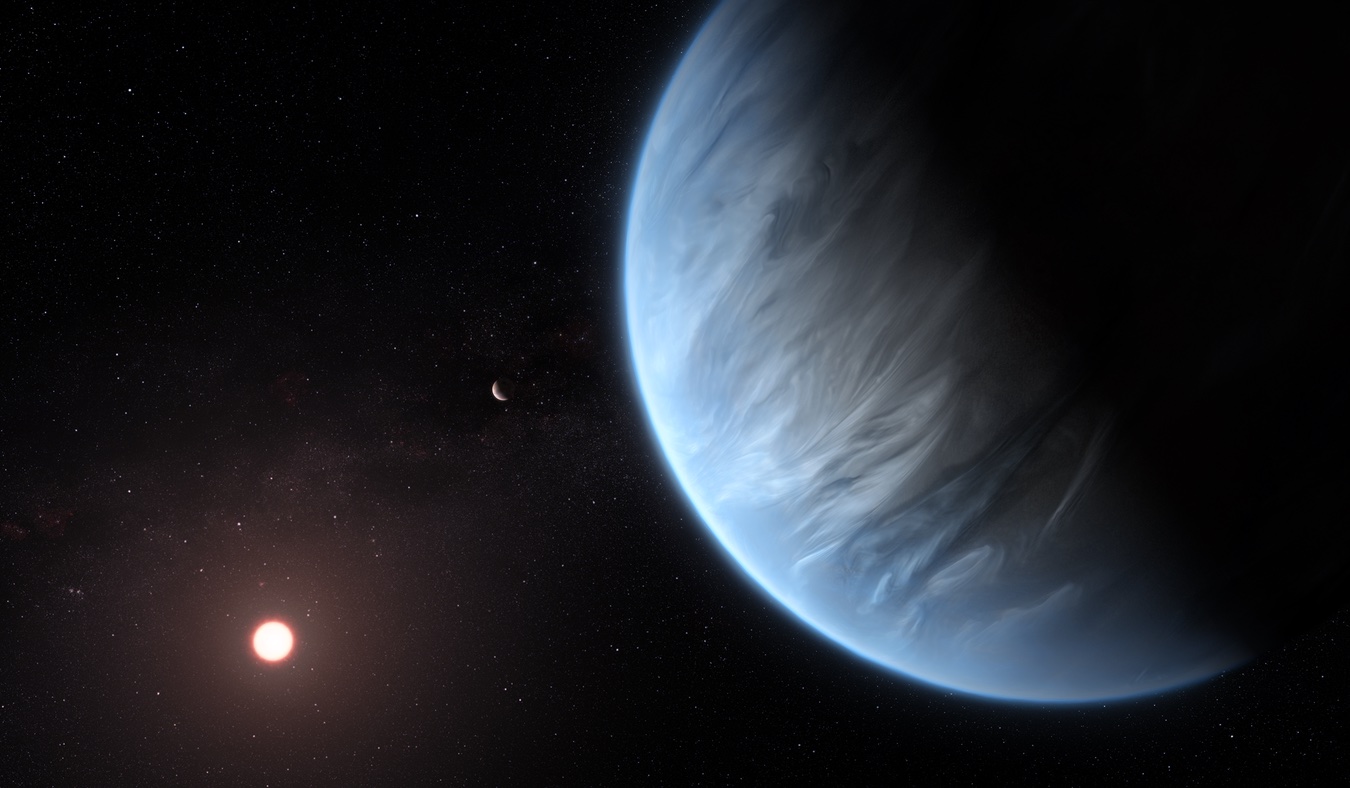UArizona researchers use JWST to study a faraway potential water world
Using the James Webb Space Telescope, a team of researchers hopes to be the first to prove the existence of a “water world.”
waterworld_ESAHubbleMKornmesser.jpg

A collaborative group of researchers including Sarah Moran, a UArizona postdoctoral research associate, is using the James Webb Space Telescope (JWST) to study TOI-1685b, an exoplanet with properties that suggest it may have a water-rich interior.
The University of Chicago-led team secured 23 hours with the JWST to observe the 16-hour orbit of TOI-1685b and is hoping to be the first to prove the existence of a “water world,” an especially low-density planet comprised largely of water rather than rock. The water, either on or beneath the surface, would account for roughly 50% of the planet’s low density.
The water world theory has gone in and out of popularity but gained traction within the past few years after new mathematical models from NASA concluded it is likely that exoplanets with oceans are common in the Milky Way galaxy. Despite the increase in attention to this theory, a water world has never been seen.
“It would be very exciting to confirm that a water world exists, it is something we’ve never been able to see before,” said Moran, who is a modeler and theorist of astronomical activity. “Regardless, it is still important to thoroughly measure the planet because it deepens our understanding of atmospheres outside our own and allows us to create more accurate models.”
The Transiting Exoplanet Survey Satellite (TESS) first saw and measured TOI-1685b, a planet outside of our solar system that drew interest from researchers due to its size, relative proximity to Earth, and a density that is consistent with a potential water world rather than a planet made primarily of rock.
The research team including Moran and Megan Weiner Mansfield, a postdoctoral research associate in Steward Observatory, will use the JWST to uncover which molecules are present in TOI-1685b’s atmosphere and how those molecules absorb and emit light, as well as provide data about the overall structure of the atmosphere on TOI-1685b.
In a process called transmission spectroscopy, researchers can analyze the light from a distant star that has passed through a planet’s atmosphere, revealing the composition and properties of the atmosphere. This is one of the tools the team will use to uncover new information about TOI-1685b ‘s atmosphere.
The team will also use the phase curve method to study the exoplanet. As the planet orbits its star, different parts are illuminated by starlight, in the same way we can observe the phases of the Moon as it orbits Earth. By observing these changes for TOI-1685b, the team can create a phase curve that provides additional atmospheric information, such as whether the planet is rich in heavy metals or lighter elements.
Through these observations, they will determine if the planet is a water world.
“If we find that TOI-1685b is a water world, we will confirm the existence of a new type of planet,” Weiner Mansfield said. “This would open a whole new area of research into how these kinds of planets evolved with so much water, especially when compared to planets within our solar system.”
Subscribe to the UArizona Impact in Action newsletter to receive featured stories and event info to connect you with UArizona's research, innovation, entrepreneurial ventures, and societal impacts.

